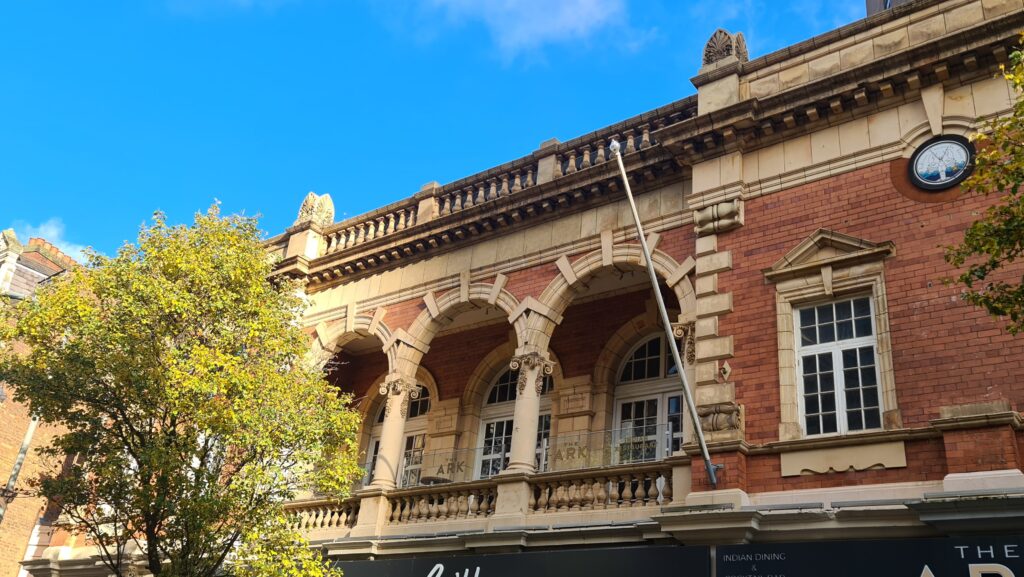
The Futurist cinema, John Bright Street, Birmingham. Photo: Stephen Hartland.
The Victorian Society is delighted that the Secretary of State for Digital, Culture, Media and Sport, and Historic England, has accepted our Birmingham & West Midlands Conservation Adviser’s request to list the former Futurist Cinema on John Bright Street in central Birmingham at Grade II. The cinema is one of the oldest in Birmingham, and an early example of cinema design. Previously the Edwardian cinema was only locally listed at Grade A. The building is one of the few significant terracotta structures in the city designed by a non-Birmingham architect.
The proprietor of the Futurist Cinema, Sol Levy, also owned the Scala (designed by Essex, Nichol and Goodman), which was demolished in 1960 to allow the construction of Smallbrook Ringway. Levy was passionate about good design and music, and both were key to this cinema’s success in the 1920s. In March 1929 the Futurist was the first Birmingham picture house to show ‘talkies’ and was the first to have screen curtains. It had mural decoration designed by Val Prince and painted by artist Erskine Williams. The Futurist closed following air raid damage in World War Two, reopening in 1943. During its latter days as a cinema, it was divided into two screens in the 1980s and became a Cannon cinema. It closed in 1991 due to the rise of multiplex cinemas, and was used in recent years as a dance club, seafood restaurant, a lap dancing club, and then lay derelict for years.
John Bright Street was cut in 1882 through an area of slums known as the Inkleys and lined with an impressive range of buildings in a variety of styles including the Futurist. The street is named after John Bright, an MP for Birmingham and a campaigner for social reforms. The Street is similar in the concept of fostering urban renewal to the grander and longer Corporation Street.
The former Futurist Cinema is designed by architect Arthur Stockwell of Newcastle-upon -Tyne. It was started in 1914, planned as the Majestic, but then after delays caused by World War I, the designs were simplified during construction by Essex, Nichol and Goodman and the building was completed in 1920.
It is described in the Buildings of England guide of 2022 as having a “Classical, rather civic design in pink-red brick and cream terracotta. Open Ionic arcade above entrance.” The façade on John Bright Street has two storeys of red brick with buff terracotta dressings. The design has classical elements and has high quality stone detailing.
The Victorian Society’s Birmingham & West Midlands Conservation Adviser, Tim Bridges said: “The Victorian Society is very pleased to learn that the historic Futurist Cinema has been added to the List. Designed in 1914, this building has played a fascinating part in the history of British cinema as one the first places where ‘talkies’ were screened in 1929. Listing will help ensure that the Futurist’s elegant Classical architecture continues to form an important part of the Victorian and Edwardian townscape of Birmingham’s John Bright Street for many years to come.”
Read more about our Birmingham Group’s work and events here.

The Futurist Cinema facade. Photo Stephen Hartland.




